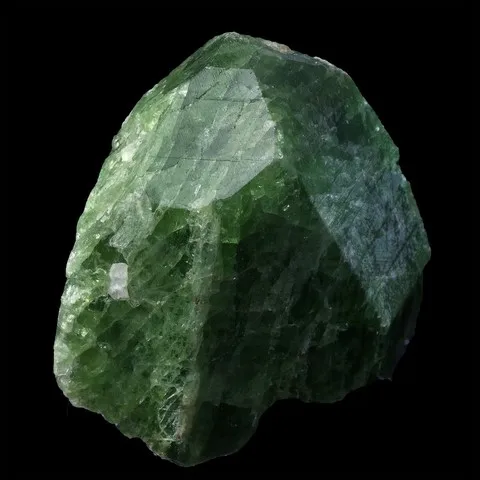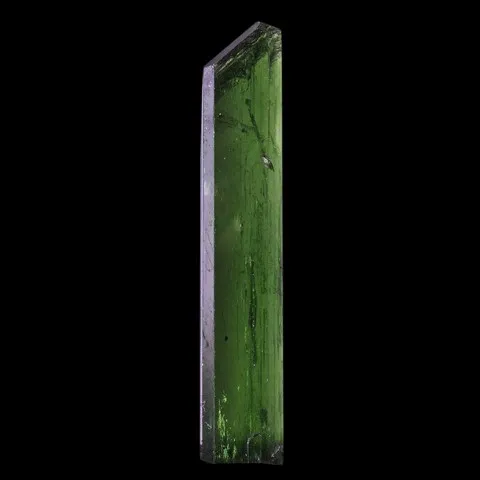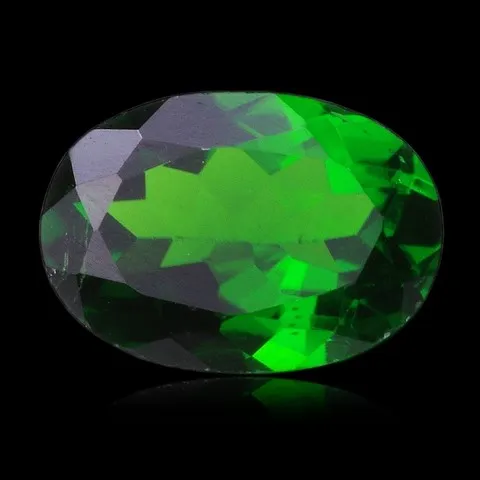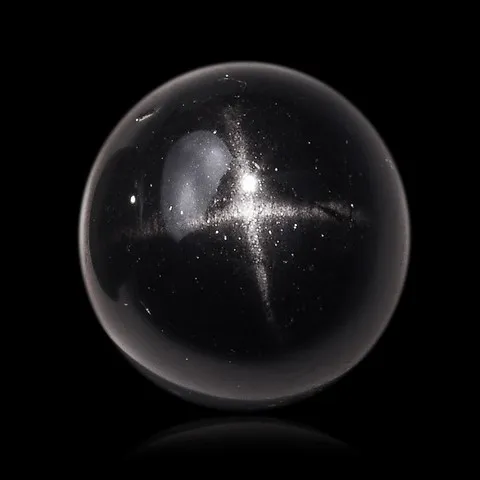DIOPSIDE
Class : Silicates
Subclass : Inosilicates
Crystal system : Monoclinic
Chemistry : CaMgSi2O6
Rarity : Very common
Diopside is one of the main minerals of the pyroxene group (clinopyroxene family). It is the magnesian pole of a series that it constitutes with the hedenbergite, the iron pole, the intermediate terms being formerly known under the name of "salite". The diopside also constitutes a series with the augite, by replacement of silicon and magnesium atoms by aluminum. Chromium can partially replace magnesium, this is called chromium-diopside or diopside-Cr. Diopside is a very common pyroxene, an essential constituent of many basic and ultra-basic igneous rocks (pyroxenite, peridotites, gabbros, norites) and associated pegmatoids. It is also present in limestones and dolomites that have undergone contact metamorphism, skarns and cipolins (accompanying wollastonite, grossular and scheelite), and in charnockites. Its name comes from both the Greek dis (double) and opsis (appearance) due to the two possible orientations of the terminal prism. The diopside occurs in sometimes slender prismatic crystals, pseudoquadratic with a square or octagonal section striated according to the cleavage, or in granular masses. Transparent to translucent, its color ranges from colorless (pure diopside without iron), to grayish, yellowish or pale green to dark green when its iron content increases. It turns intense green when it is chromium-rich. It is exceptionally pink or bluish to purplish (violane variety). Crystals commonly show color variations from end to end. Diopside is a mineral that can be used as a gemstone when transparent and / or colored : light green crystals from China and Madagascar, emerald green from Russia and Brazil, as well as star diopside from India are famous.
Diopside in the World
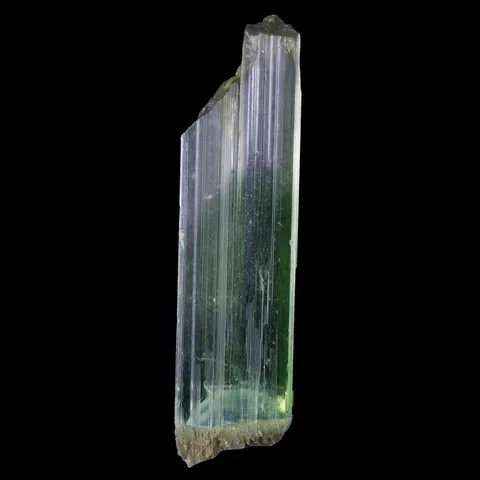
Diopside in France
In France, diopside is present in millimetric needles in the volcanic rocks of the Massif Central and their alluvium, it is found in Murol and Puy de Tunisset (Puy-de-Dôme). Microcrystals have also been described in St Jean-de-Maurienne (Savoie), in Canari (Haute-Corse).
Twinning
Single or multiple twins are common on {100} or {010}.
Fakes and treatments
There are no known fakes for this mineral species.
Hardness : 5.5 to 6.5
Density : 3.22 to 3.38
Fracture : Irregular to conchoidal
Trace : White
TP : Transparent to translucent
RI : 1.663 to 1.728
Birefringence : 0.030
Optical character : Biaxial +
Pleochroism : Weak
Fluorescence : Sometimes white
Solubility : Insoluble
Magnetism : Paramagnetic
Radioactivity : None

